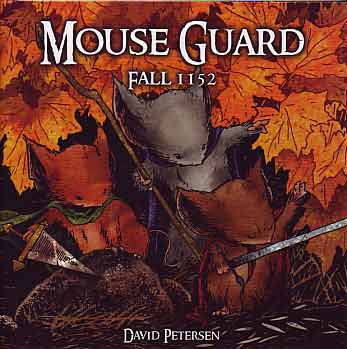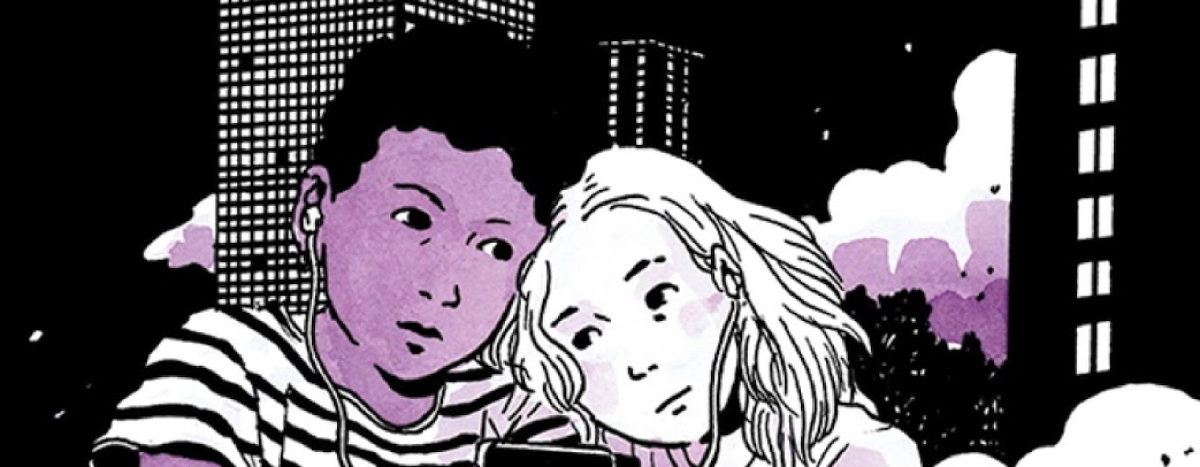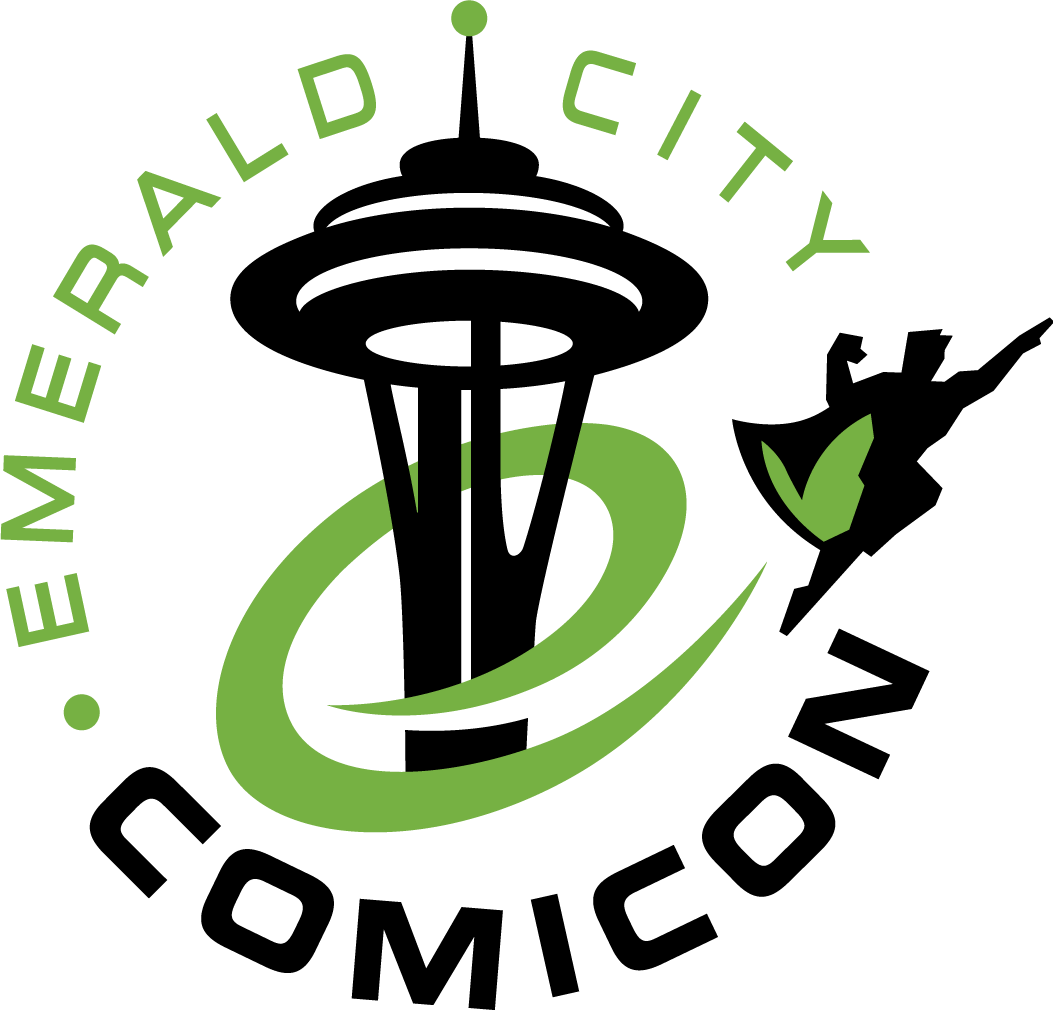When I first began writing this column, my intent was to help creators and comics publishers understand the methods to the madness of landing a book on the bestseller lists. After the November 8th Beat posting of the NYT list showing several GN titles on the list, it’s really not a question of whether a GN can make the list, but more like how a book gets there. For a quick refresher the first post dealt with the market opportunities. Posting number two talks about obstacles and distribution. The third one is about outliers like Diary of a Wimpy Kid and why ALL AGES is a very bad business decision.
Going back to The Beat posting on November 8th, folks will notice that an overwhelming majority of the titles that do make the lists for NYT or traditional publishing awards are creator-owned properties being published by one of the major traditional publishing houses or one of their smaller imprints. One of the many differences between traditional houses and comics pubs is the publicity and marketing efforts. These folks have a basic punch list of marketing elements and publicity in place to make sure that the word gets out about the ‘next big book’.
Promotion Starts Way Before Pub Date: More often than not, the marketing for the book begins officially about 6 months prior to the publication date of the book. Advance reader copies or uncorrected proofs are sent out to a wide range of reviewers with the various trade publications and major newspapers. A sell sheet is also created for the wholesale and distribution market. Publicity teams review the calendar for trade shows and consumer book festivals, bookstore events, etc., where they can get the author placed.
Advance Reader Copies are Critical: More and more now the trade publications are accepting PDF/electronic copies of graphic novels because there is a better understanding of the costs associated with producing full-color hard copy books. For the creator who may be sensitive to sending out unfinished art, there are ways to protect your work but the truth of the matter is that the major trade publications are also sensitive to this and don’t want to risk their relationships with you or your publisher. You can trust them to keep your work secure. These start going out as soon as you can make them available. Don’t worry that the artwork isn’t complete; this is why they are called Advance Reader Copies/Uncorrected Proofs.
The Role of Sell Sheets: Also known as Tip Sheets, these are single pages of information describing the book. It has your basic info: Title, Story Summary, Author Info, Target Demographic, Pricing, Marketing(selling points) and Advertising Elements. Keep the story summary to the basic elements. Below is a story summary of a fictional book title I created for this post.
Ex: When The Bad Cats Ruled Portland
Story Summary “This is a fantasy about a boy with a magical stick who discovers he’s the most powerful cat wrangler in Portland. Josh Chipman is an orphan and he’s got two loyal cats who help him defeat the evil dark lord while also coping with the drama of middle school romance and homework.”
Series: If your book is part of an ongoing series, don’t assume the reader of the tip sheet knows anything about the series. Add the series info to the end of the story summary and keep it simple.
“This is book three of a 5-book series and in this book Josh discovers that his mom may once been married to the principal aka: Dark Lord, of his school. How will Josh manage his emotions and deal with the evil dark lord’s nefarious intentions?”
Selling points are things like previous awards and/or support quotes blurbs from other known or well-known authors and/or trade publications and blog sites. Keep a blurb to a single sentence if possible and try to keep one as clean as possible. While a quote from one of your heroes may be a thrill to get, you will need to keep the language professional. Remember that the person reading the sell sheet is a professional and may get a bit turned off by a blurb that says “This story makes me want to f*%#ing shred all my own stuff and start over!” I’d suggest going back to your author friend and ask them if they don’t mind an edited version for the sell sheet. Now for the promotion of the book to the general public? I’d probably leave the quote as is with the use of punctuation marks. We will deal with the public aspect of the marketing in a future post.
The thing that the sell sheet ultimately creates is the sales pitch for your book. IF you do it right, then everyone in your food chain, from the publisher to the buyer (at retail and institutional) to the bookseller and librarian will be able to repeat verbatim your story summary. It’s the basic ‘elevator pitch’ you need to create in order to clearly define what your book is about and what will compel someone to sell it.
Variant Covers are not a Selling Point in the Regular Book Trade: We all know that book covers play a major role in how a book is promoted on the shelves of bookstores (or online) and as far as variants go, the professional buyers in the retail, library and education markets really couldn’t care less about them. The reality is a variant can also do more harm than good because, if the artwork inside the book is not consistent with the exterior, it’s basically false advertising-especially if the cover is better than the interiors. (We will also deal with cover design in another posting) The thing about variant covers is that, in my humble opinion, they have become abused and overused. Ideally, variant covers are something created as a special prize for the loyal retailers to have and keep. They should be used as a reward for the love and support-that’s it.
Publicity and Marketing are Two Different Skill Sets: And they are critical to the success of your book. The stuff about sell sheets, promotions and creating of advance reader copies, along with advertising, are elements of marketing. Publicity is the art of getting the word out about your book. One of the best first examples I can recall for a graphic novel was in a Publishers Weekly interview with David Petersen (MOUSE GUARD) who said that things really started happening for the book after he hired a publicist. As it so happens, I know the folks whom he contacted at Media Masters and the reason why I include their name here is because they have a keen understanding of the book trade and they also understand graphic novels. A strong publicist will get your book placed into the right hands versus dumping copies everywhere and anywhere possible. They will tell you which are the right trade shows or book festivals to speak or sign at. They will connect you with the booksellers who have the most influential voices in the industry.
Publicity is not something you simply ask a boyfriend or girlfriend to ‘manage’. Would you let them perform surgery on you or repair your car? Unless they are actually a professional publicist, don’t dump this responsibility on someone who is not a pro.
You Get Back What You Put In: If you read Jim Zub’s recent post it’s a really good inside look at the effort required for selling a book. Raina Telgemeier (SMILE), Jimmy Gownley (AMELIA RULES), Jenni Holm (Babymouse) and Jeff Kinney (Diary of a Wimpy Kid) have all put in endless hours and miles to promote their books. They shake every hand; they sign every book as if each person was a new friend. Each of these folks have also taken the initiative to get out and promote, not waiting for the publisher to do it for them and it pays off. The publisher will and should help with some of the heavy lifting but the author who is a shameless self- promoter is the one who sells a lot more books.
As I will constantly point out, the effort to sell a book is equal to the effort involved in the creation. It’s a long haul but if you as a creator or a publisher have a basic road map then at least you have a decent head start. If your publisher says they can’t afford to do this stuff, or if you don’t think you need to do what a successful author does, then maybe you need to rethink your goals. Otherwise you have a very nice box of books that only your friend and your mom will know exists.









One note about Advance Reader Copies (ARCs):
If the line art is finished, you can collate that into a PDF or paper copy. Many color GN ARCs from publishers will print the first ten pages or so in color, to give a sample of what the finished book will look like. The rest is uncolored black and white pages (which are cheaper to print). Generally, at six months out, the letter, coloring, and book design are finished, and it’s ready to be printed in China. (Yes… it costs 50% less to print a book in China, especially one with nothing but pictures.)
ARCs also make great promotional items for fans, especially if the writer becomes famous later! It’s a limited edition of sorts. Or you can raffle one off at a signing/event before the book ships.
I’d love to see a future post about book design. Colleen Venable and/or Chip Kidd would be great interviews!
Torsten, those are two perfect names to ref for book design. Chip’s done some amazing things and Colleen is a very solid rising star-and creator as well.
With ARCs I hadnt really looked at them as a collectible but I’d say you are spot on. As it so happens I was lucky enough to wind up with an ARC for R. Crumbs Illustrated Book of Genesis. Otherwise, the rest of the ARCs I’ve given away to librarians and booksellers…
Totally agreed on the importance of ARCs — they’re the single best way to get the word out as it gives you an excuse to reach out to your list with something interesting . And yeah, at six months out you should be done, so there’s no real need for black and white ARCs unless it saves you a lot on printing costs.
With all the social media opportunities and the more fun and creative publicity events at your disposal, it’s always a wonder to me that ARCs are still the dependable workhorse of book marketing.
Physical ARCs are a great way for librarians and booksellers to build “word of mouth” publicity for books. I use them with my students, who will sometimes write letters to the creators. I have purchased a number of graphic novels based on my students’ positive comments about the ARCs. And sometimes, those students whose parents can afford to buy books will ask their parents to buy some of those graphic novels …
I’m going through all this right now and I do mostly agree. The points where i disagree are not point of contention, but distinctions for what i’m gearing up for our December 21st Kickstarter launch. more on that later.
It would be really interesting to see how you manage the kickstarter project. I think one of the things to include in any kickstarter is dollars for advertising. A well placed ad on sites like The Beat will help boost awareness of the book. Which reminds me that one of the future posts will focus on the hows and whys of advertising.
Gotta agree with Torsten above, John. I’d love to see you follow through with a piece about the intricacies and value of book design. I think that cartoonists, like novelists, often forget that books are objects and that there is a very rarified, rather specialized art to making those objects attractive that has very little to do with making good comics. Cartoonists should listen to the advice of designers in considering the overall cost of bringing their product from the drawing to the book.
I also think it’d be good to engage in a discussion about just what a really savvy editor can bring to a project these days. As the creation of graphic novels moves more to the homespun and away from the studio model with it’s industry-controlled decisions over trademark properties, cartoonists tend to lose sight of what it is a really good editor brings to a project creatively. If you’ve got a really solid graphic novel that you’ve, oddly enough, made out there on your own, well, that’s fantastic for you and maybe all you really need, if the world was in fact flat, would be someone to bankroll and promote that wonderful work of obvious but unvarnished genius. But if you’re taking a project around to publishers of books like any novelist would, not just to people who are vested with the monthly guardianship of how many weblines should be drawn on each of Spider-Man’s fingers, then you need to be ready to understand the role a good (or bad) editor can play in polishing a novel for success. People don’t take a graphic novel idea to someone like Bob Weil so he can spell-check their genius.
I love the creative freedom of comics, but I’ve come to cherish the and look forward to the relationships I’ve forged with smart editors and recognize it for the creative fire that finally hones a really great graphic novel.
@John Yeah I’m making the digital and grassroots rounds like right now Join us on The Moxie Kickstarter Launch: http://on.fb.me/UkD6iq
Like us on: Faceook:http://on.fb.me/VqWwms
Follow us on: Twitterhttp://bit.ly/TnjuJi
Moxie: Let’s make comics!
Thanks for the tips! I’ve been thinking about a lot of this stuff lately, I know some of them but i kind of feel out of my depth in sourcing a good comprehensive list of trade publications to send advance reader copies of my next book – seems like it changes faster than i can keep up with and i’m not sure how to judge which are the best. Anyway you could post a link to a solid go to list? would be a big help.
Okay… crazy idea here…
How about a “Bestseller” programming track at NYCC13 (and/or BEA13)?
One panel brings together editors from comics and book publishers.
One panel has book designers chatting.
One panel could feature authors who have worked for both comics and book publishers.
Another could be librarians, reviewers, buyers talking about what they look for.
Then you could grab some creators who use unique marketing tricks.
Maybe they should write about Team Trauma and the days of Commander Steve Namgis Sigman.
Hi John,
I just came across this series of posts as I am currently writing my master’s thesis on this very topic. Your insight, especially as an industry professional, has been incredibly helpful!
I am wondering if there are overviews of the demographics (in terms of readership) for the industry. I’m interested in exploring the democratization, in a sense, of graphic novels and comic books. I think it would be cool to look at how the improvement in marketing graphic novels could impact certain misconceptions about who comics and graphic novels are published for. However, as I’m not working inside the industry (not yet, at least!), I’m finding this information particularly hard to come by.
Thanks
Hi, I enjoyed your article. I was wondering, do you have a list of reviewers that you would recommend sending the ARC’s out to?
Hi! Great sound advice!
This second publication of mine needs a big push! In the sea of talent out there I am told my project is a flying fish!!
Good luck all!
A wonderful piece of advice!!
Thank you!!
Comments are closed.